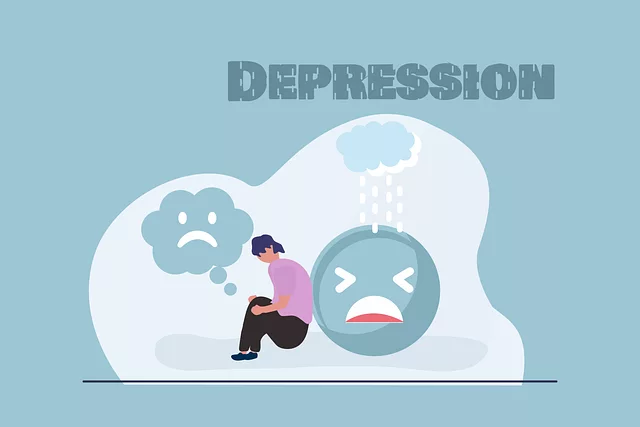Evaluating Kaiser Permanente's Lafayette mental wellness programs involves a blend of quantitative (satisfaction scores, clinical outcomes) and qualitative (self-care practices, mind over matter) metrics. Success is gauged through participant feedback on accessibility, cultural sensitivity, and relevance, ensuring long-term resilience and community engagement. Researchers combine structured surveys from sources like Kaiser Permanente mental health center reviews Lafayette with open-ended interviews to understand both objective outcomes and subjective experiences, guiding improvements in mental health services while adhering to holistic principles.
Mental wellness programs are essential components of modern healthcare, and their effectiveness is crucial. This article explores evaluation methods used at Kaiser Permanente mental health centers in Lafayette, focusing on key performance indicators (KPIs) and diverse assessment tools. We delve into the importance of client satisfaction metrics, presenting case studies to highlight successful strategies. Furthermore, we discuss how reviews and feedback loops drive continuous improvement, ensuring programs remain robust and tailored to clients’ needs, as evidenced by Kaiser Permanente Lafayette’s initiatives.
- Assessing Program Effectiveness: Metrics and Tools
- – Overview of key performance indicators (KPIs) for mental wellness programs
- – Quantitative vs. qualitative evaluation methods
Assessing Program Effectiveness: Metrics and Tools

Evaluating the effectiveness of mental wellness programs is a multifaceted process that requires a blend of quantitative and qualitative metrics. At Kaiser Permanente mental health centers, like those in Lafayette, reviews play a pivotal role in understanding program impact. Metrics such as participant satisfaction scores, clinical outcome measures (e.g., reduction in anxiety or depression symptoms), and retention rates offer tangible insights into program success.
Beyond these standard measures, assessing the integration of self-care practices and mind over matter principles within the program can reveal deeper effects on individuals’ well-being. Community outreach program implementation, another key aspect, can be evaluated through participant feedback on accessibility, cultural sensitivity, and overall relevance to their lives. This holistic approach ensures that mental wellness initiatives not only meet immediate needs but also foster long-term resilience and community engagement.
– Overview of key performance indicators (KPIs) for mental wellness programs

Mental wellness programs, akin to those found in renowned centers like the Kaiser Permanente mental health center reviews Lafayette, don’t just measure success through qualitative feedback. They employ a robust framework of Key Performance Indicators (KPIs) to quantify their impact. These KPIs serve as beacons, guiding the evaluation process and ensuring that the program aligns with its objectives.
Key metrics include tracking improvements in self-care practices, measuring the development of inner strength among participants, and gauging the effectiveness of emotional well-being promotion techniques. By focusing on these areas, programs can demonstrate tangible outcomes—a testament to their commitment to fostering holistic mental health.
– Quantitative vs. qualitative evaluation methods

When evaluating mental wellness programs, researchers and healthcare providers often employ either quantitative or qualitative methods, each offering unique insights into program effectiveness. Quantitative evaluations focus on numerical data and statistical analysis, such as surveys with structured questions that can be answered by a large number of participants, like those found in Kaiser Permanente mental health center reviews Lafayette. These methods provide objective measures of outcomes, allowing for comparisons across different programs and over time. By analyzing trends in scores related to symptoms, functioning, or satisfaction, researchers can quantify improvements and identify areas needing attention.
In contrast, qualitative evaluations delve deeper into individuals’ experiences and perceptions through open-ended questions, interviews, or focus groups. This approach captures subjective reports of program impact, including personal stories of transformation and challenges faced. Incorporating insights from participants, such as those who share their journeys in mental health center reviews, can provide valuable context for understanding the broader implications of a program. Together, these evaluation methods—one rooted in numbers and the other in narratives—can offer a comprehensive picture, informing improvements to mental health services, including Risk Management Planning for Mental Health Professionals and Burnout Prevention Strategies for Healthcare Providers, while adhering to foundational principles like Mind Over Matter.
Evaluating mental wellness programs is essential for understanding their impact and identifying areas for improvement, especially in renowned centers like Kaiser Permanente. By utilizing a combination of quantitative metrics and qualitative feedback, as demonstrated through the analysis of Kaiser Permanente mental health center reviews in Lafayette, organizations can gain valuable insights to enhance their services. This two-pronged approach ensures a comprehensive assessment, allowing for data-driven decisions and tailored strategies to support the well-being of individuals within these centers.






